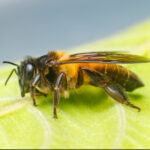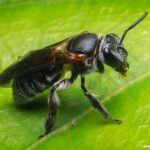The Unique World of Stingless Bees: Guardians of Biodiversity and Producers of Exquisite Honey
- Introduction to Stingless Bees: Overview and Distinct Features
- Habitat and Distribution: Where Stingless Bees Thrive
- The Ecological Role of Stingless Bees: Importance in Biodiversity
- Harvesting Treasures: The Process of Producing Stingless Bee Honey
- Nutritional and Medicinal Benefits of Stingless Bee Honey
- Conservation Efforts: Protecting Stingless Bees and Their Habitats
- Cultural Significance: Stingless Bee Honey in Various Traditions
- Conclusion: The Future of Stingless Bees and their Honey
-


Stingless bees are a diverse group of eusocial bees belonging to the tribe Meliponini, which comprises over 500 known species. Unlike their more widely recognized relatives, such as the Western honey bee (Apis mellifera), stingless bees, as their name suggests, lack a functional sting. These bees are integral to ecosystems and human agriculture, particularly in tropical and subtropical regions. This overview explores the biology, behavior, honey production, and significance of stingless bees and the honey they produce.
Biological Classification and Diversity
- Taxonomy: Stingless bees belong to the family Apidae, within the tribe Meliponini. They are closely related to honey bees and bumblebees but represent a distinct lineage with unique characteristics.
- Species Diversity: There are over 500 species of stingless bees, primarily found in regions such as Central and South America, Africa, Southeast Asia, Australia, and parts of Oceania.
Distribution and Habitat
Stingless bees thrive in warm climates, predominantly inhabiting tropical and subtropical environments. They are commonly found in:
- Rainforests: Providing abundant floral resources and nesting sites.
- Savannas and Grasslands: Where they adapt to different floral communities.
- Human-Altered Landscapes: Including agricultural areas, urban gardens, and managed apiaries.
Behavior and Social Structure
- Eusociality: Like honey bees, stingless bees exhibit eusocial behavior, living in colonies with a single queen, numerous workers, and, seasonally, males (drones).
- Nesting: They build nests in various cavities, including hollow trees, underground burrows, or man-made structures. The nests are often constructed from wax, resin, mud, and plant materials.
- Foraging: Stingless bees are efficient foragers, collecting nectar and pollen from a wide array of flowering plants. Their foraging behavior plays a critical role in pollination.
Honey Production
Characteristics of Stingless Bee Honey
- Consistency and Flavor: Stingless bee honey is typically more liquid and has a more complex flavor profile compared to honey bee honey. It may exhibit tangy, sour, or fermented notes due to higher moisture content and different sugar compositions.
- Color and Aroma: The honey can vary in color from light amber to dark brown, often with a strong, distinctive aroma influenced by the local flora.
- Nutritional Content: It contains a variety of sugars, enzymes, amino acids, vitamins, and minerals. Additionally, it may possess unique bioactive compounds contributing to its medicinal properties.
Production Process
- Collection: Workers gather nectar from flowers and bring it back to the hive, where it’s stored in honey pots within the nest.
- Ripening: The collected nectar undergoes enzymatic transformation and partial evaporation, facilitated by the bees’ fanning behavior, reducing moisture content and preventing fermentation.
- Capping: Once adequately ripened, the honey is sealed with a wax or resin cap to preserve it.
Differences from Honey Bee Honey
- Moisture Content: Stingless bee honey generally has higher moisture levels, making it more prone to fermentation and giving it a unique taste.
- Storage Stability: Due to its higher moisture content, stingless bee honey has a shorter shelf life compared to honey bee honey unless properly processed or refrigerated.
- Flavor Complexity: The diversity of plant sources and the unique enzymatic activities of stingless bees contribute to a more varied flavor profile.
Uses and Cultural Significance
- Culinary Uses: Used as a sweetener in foods and beverages, incorporated into traditional recipes, and sometimes consumed raw for its unique taste.
- Medicinal Properties: Valued in traditional medicine for its purported health benefits, including antimicrobial, anti-inflammatory, and antioxidant properties.
- Economic Importance: Beekeeping of stingless bees, known as meliponiculture, supports local economies, particularly in rural and indigenous communities.
- Cultural Practices: In many cultures, stingless bees and their honey hold symbolic significance, featuring in folklore, rituals, and artisanal crafts.
Health Benefits
Research suggests that stingless bee honey offers several health benefits:
- Antioxidant Properties: Contains phenolic compounds that help neutralize free radicals, potentially reducing the risk of chronic diseases.
- Antimicrobial Activity: Effective against various pathogens, making it useful in wound healing and as a natural preservative.
- Digestive Health: May aid in digestion and support gut health due to its probiotic potential.
- Immune Support: Contains compounds that can enhance immune system function.
Conservation and Sustainability
Stingless bees face threats from habitat loss, pesticide use, climate change, and competition with invasive species. Conservation efforts include:
- Habitat Protection: Preserving natural habitats and promoting the planting of native flowering plants to support bee populations.
- Sustainable Meliponiculture: Encouraging responsible beekeeping practices that do not harm wild populations and support biodiversity.
- Research and Education: Increasing scientific understanding of stingless bees and educating communities about their ecological and economic importance.
Challenges in Stingless Beekeeping
While meliponiculture offers numerous benefits, it also presents challenges:
- Low Productivity: Compared to honey bees, stingless bees produce less honey, requiring efficient management to be economically viable.
- Climate Sensitivity: Susceptible to extreme weather conditions, which can affect colony health and honey production.
- Pest and Disease Management: Limited options for controlling pests and diseases without harming the bees or compromising honey quality.
Future Prospects
Advancements in research and technology hold promise for the future of stingless bees and their honey:
- Improved Beekeeping Techniques: Developing methods to enhance honey yield and colony resilience.
- Market Expansion: Increasing demand for natural and specialty honeys can provide economic incentives for meliponiculture.
- Conservation Initiatives: Strengthening efforts to protect stingless bee habitats and promote biodiversity.
Conclusion
Stingless bees and the honey they produce represent a remarkable aspect of biodiversity with significant ecological, economic, and cultural value. Their unique characteristics differentiate them from honey bees, offering diverse flavors and potential health benefits. However, ensuring their conservation and sustainable management is crucial amid growing environmental challenges. By supporting meliponiculture and promoting awareness, societies can preserve these essential pollinators and the valuable resources they provide.
Leave your email address in the comments section if you would like to get the monthly newsletter from beewhisperer360.

https://beekeepingideas.com/conservation-and-biodiversity-enhancement-by-stingless-bee-honey/